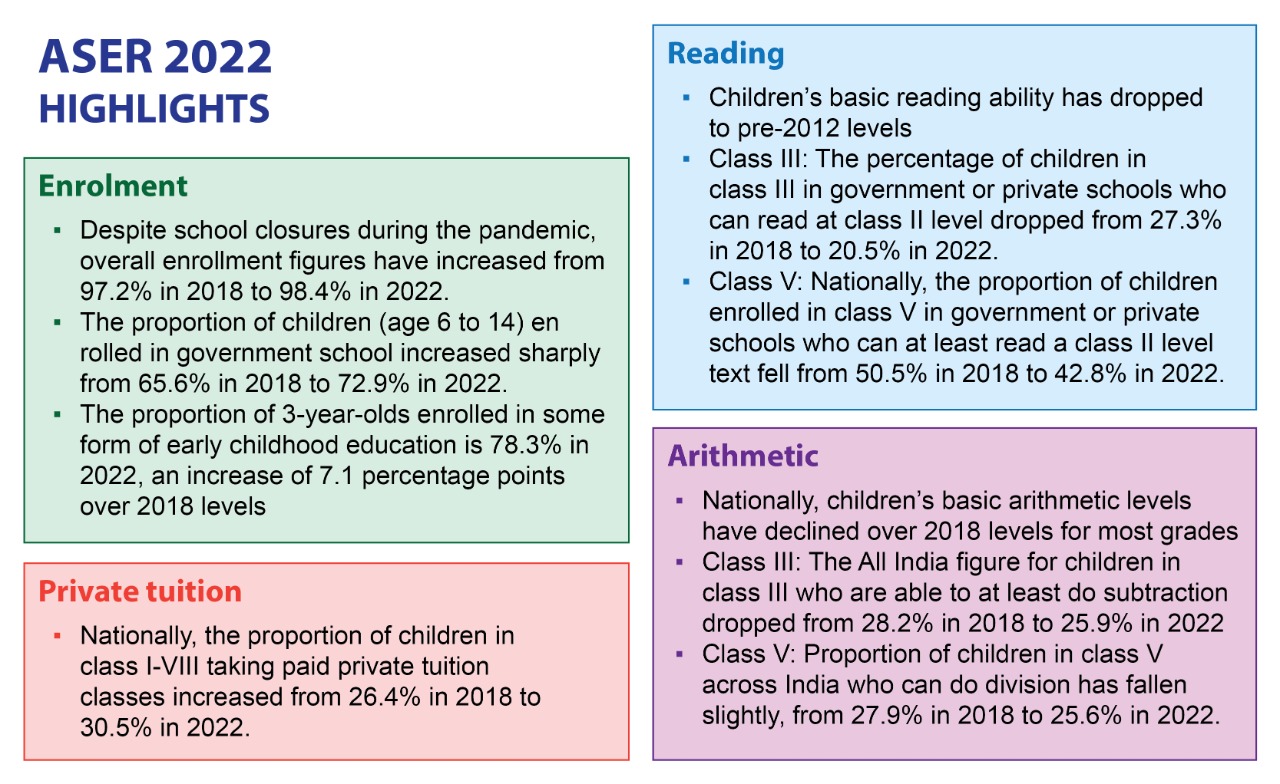The Annual Status of Education Report (ASER) 2022, released on January 18 by Pratham Education Foundation, confirms that children’s learning levels have dropped drastically due to the closure of schools because of the Covid-19 pandemic. The ASER survey, which assesses learning outcomes of students in rural government and private schools, reveals a huge dip in arithmetic and reading abilities of students.
According ASER 2022, children’s learning levels are down to pre-2012 levels – only 20.5 percent of class III children can read a class II text. The basic reading ability of children in class III dipped from 27.3 percent in 2018 to 20.5 percent in 2022, and that of students in class V fell from 50.4 percent in 2018 to 42.8 percent in 2022.
There’s also a big dip in numeracy levels. The proportion of children in class III who could do at least subtraction fell from 28.2 percent in 2018 to 25.9 percent in 2022, and that of students in class V dipped from 27.9 percent in 2018 to 25.6 percent in 2022.
“This fall is a huge drop, given how slowly the all-India numbers move, and confirms fears of large learning losses caused by the pandemic,” says Wilima Wadhwa, Director, ASER Centre.
However even as learning outcomes dipped to 2012 levels, enrolment in schools increased from 97.2 percent in 2018 to 98.4 percent in 2022. The big highlight is the increase in enrolment of students in government schools which had seen a steady decline from 2016-2014. In 2018 it was 65.6 percent, climbing up steadily by 7.3 percent in the period 2018-2022 to 72.9 percent. The report attributes the significant shift of students from private to government run schools to job losses and financial distress during the pandemic.
The report also shows that a larger number of students are signing up for private tuition classes – up from 26.4 percent in 2018 to 30.5 percent in 2022.
ASER 2022 surveyed 19,060 villages in rural India, which include 374,544 households and 7 lakh children in the age group three to 16 years.
Also read: Over 60% pupils have access to smartphones, 3/4 receive family support: ASER 2020
Posted in National, News

























